10 Famous Belgian Foods You Have to Try in Belgium
Belgian cuisine is a delightful mix of flavors and traditions, reflecting the country’s rich cultural heritage. Renowned for its culinary diversity, Belgium offers an array of dishes that appeal to both locals and visitors alike. The food in Belgium is characterized by a blend of influences from neighboring countries, creating a unique gastronomic experience.


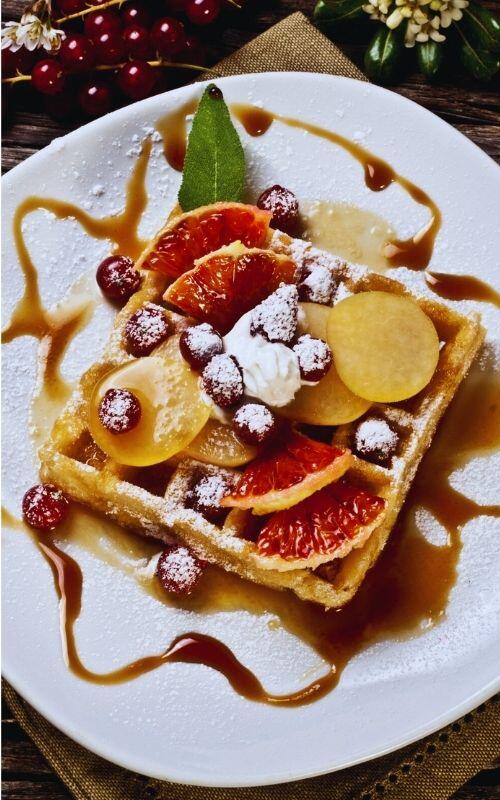
The influence of French, German, and Dutch cuisines on Belgian food culture is unmistakable. Each has contributed distinct elements that shape the national palate:
- French Influence: Seen in the sophisticated techniques and ingredients used in the cooking, such as rich sauces and delicate pastries.
- German Influence: Evident in hearty dishes like sausages and stews, which emphasize robust flavors and substantial portions.
- Dutch influence: is reflected in various popular dishes.
These cross-cultural influences make this food not just diverse but also deeply rooted in tradition, offering something for every taste. Whether it’s indulging in luxurious chocolates or savoring crisp fries, the culinary traditions of Belgium are sure to leave a lasting impression.
1. Belgian Chocolate
Belgian chocolate is known for its exceptional quality and craftsmanship. It is widely recognized as one of the best chocolates in the world. This reputation comes from their strict standards in choosing cocoa beans and their careful methods of processing, which are essential in creating high-quality chocolate to enjoy with French fries.
The process of making Belgian chocolate is unmatched. Skilled artisans put their focus on creating delicious pralines and truffles, paying attention to every detail of flavor, texture, and presentation. This commitment to excellence has a significant impact on the local economy by attracting tourists and supporting a thriving chocolate industry.
Some well-known brands that specialize in exquisite chocolates include:
- Godiva
- Côte d’Or
- Neuhaus
- Leonidas
Belgium is also home to renowned chocolatiers like Pierre Marcolini and Jean-Philippe Darcis, who have played a key role in establishing Belgium’s prestigious position in the world of chocolate.
If you want to fully immerse yourself in the world of Belgian chocolate, here are some places you should consider visiting:
- The Chocolate Line in Bruges
- Choco-Story Brussels
- Planète Chocolat in Brussels
These locations not only offer opportunities to taste different varieties of chocolate but also provide insights into the fascinating process of making chocolate.
2. Must Try on Your Next Trip: Famous Waffles
Belgian waffles are renowned worldwide for their light, fluffy texture and delicious flavor. There are two main types of Belgian waffles:
Brussels Waffles
Rectangular in shape, these waffles are known for their light, crispy outside and soft inside. They are usually bigger and have deeper pockets compared to other types of waffles.
Liège Waffles
Round and denser than Brussels waffles, Liège waffles are made with a dough that has chunks of pearl sugar mixed in. When cooked, the sugar caramelizes, giving the waffle a sweet, slightly crunchy crust.
Common toppings can take these waffles to another level of deliciousness. Some popular choices include:
- Fresh fruits like strawberries and bananas
- Whipped cream
- Chocolate sauce
- Ice cream can be creatively paired with a tangy caper sauce for a unique dessert experience.
Waffles hold a special significance in Belgian culture, often enjoyed as street food or a comforting indulgence at local cafes. Iconic waffle houses such as Maison Dandoy in Brussels and Vitalgaufre offers delicious waffles that can be complemented by a side of croquette for a satisfying meal. offer some of the best waffle experiences you can find.
Belgian waffles are not just loved by locals but also attract tourists looking for an authentic culinary adventure.
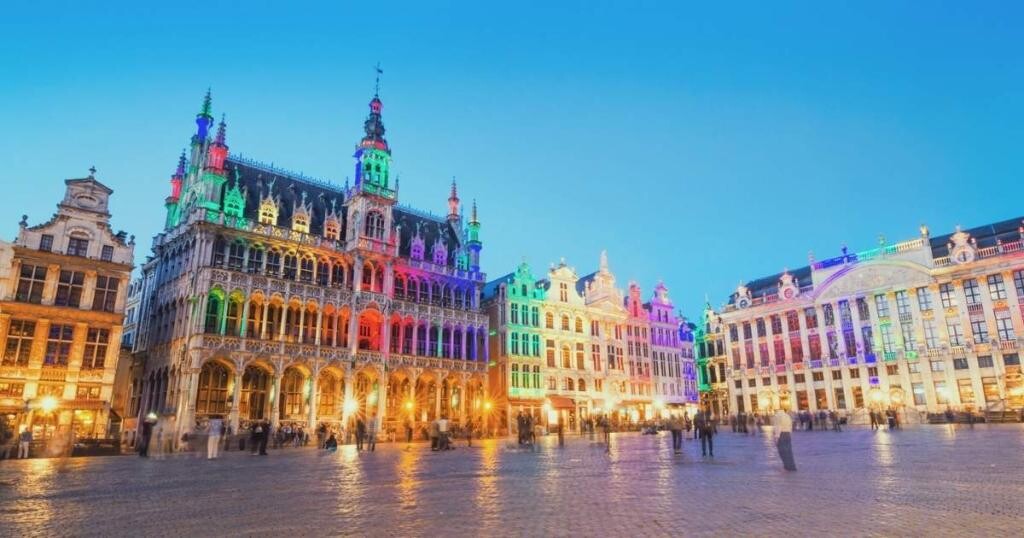
3. Belgian Fries (Frites)
Belgian fries, or frites, are a famous food for their special double-frying method. This technique ensures that the fries have a crispy outside and a soft, fluffy inside. Here’s how it works:
- The potatoes are first fried at a lower temperature to cook them thoroughly.
- Then, they’re fried again at a higher temperature to give them that perfect crunch.
Fries are deeply rooted in Belgian culture and are often enjoyed as a popular street food snack, usually served with a variety of sauces. They’re typically served in paper cones and paired with various dipping sauces. Some of the most popular sauces include:
- Mayonnaise: Is usually served with fries, has become an iconic condiment in Belgium.
- Andalouse Sauce: A tangy combination of mayonnaise, tomato paste, and peppers that adds a subtle spicy flavor.
These flavorful sauces elevate the humble fry into a gourmet delight, making them an integral part of Belgium food culinary traditions.
Did You Know? Street vendors, known as frietkoten or fritures, can be found throughout Belgium, each offering their own unique version of this iconic snack.
Indulging in Belgian fries is like taking a bite out of Belgium’s street food scene—a delicious way to experience the country’s love for simple yet tasty delights.
4. Moules-Frites
Moules-frites, a beloved Belgian dish, combines the savory delight of mussels with the crispy goodness of fries. This iconic pairing has earned its place as a national dish in Belgium, celebrated for its simplicity and rich flavors.
Cooking Methods
Different methods are used to cook the mussels, enhancing their natural taste:
Beer Broth: Some recipes incorporate Belgian beer, adding a unique depth and richness to the dish.
Steaming in Wine Broth: Often prepared with white wine, shallots, garlic, and fresh herbs like parsley.
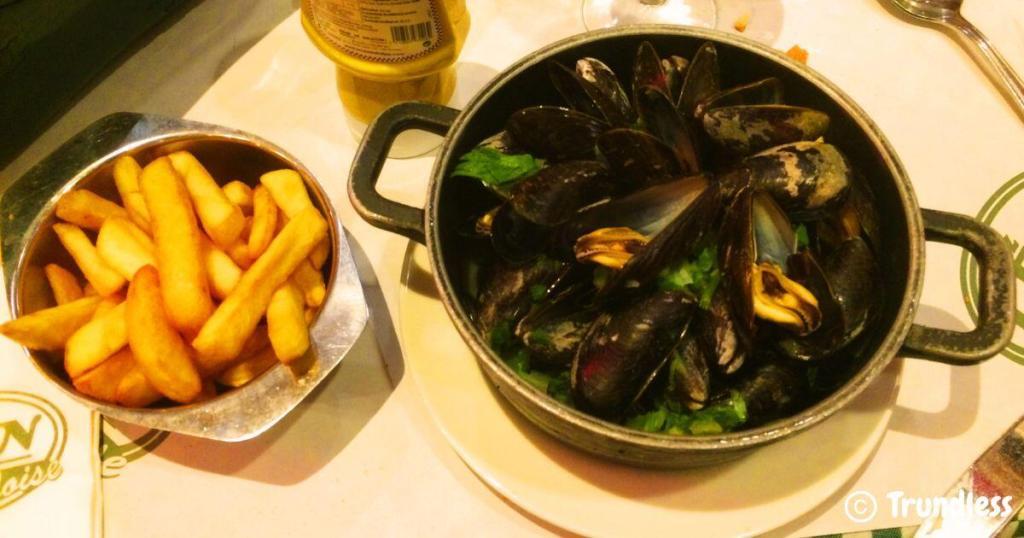
Historical Context
The origins of the mussel and French fry combination can be found in Belgium’s seaside areas, where mussels were plentiful. This simple seafood dish gradually merged with the popular street snack of fried potatoes, resulting in a filling and comforting meal. The custom of pairing mussels with fries emerged in the 1700s and has since become a fundamental part of Belgian food heritage. Mussels from the North Sea are gathered according to the season, with harvesting occurring from June through April. Both of these dishes are cornerstone elements of Belgian gastronomy and should be prioritized by food enthusiasts visiting the nation.
Experience It Yourself
For an authentic tasting experience, visit local bistros and seafood restaurants across Belgium. Each establishment may offer its twist on this classic dish, allowing you to savor different regional variations.
5. Stoemp
Stoemp is a traditional Belgian dish that combines mashed potatoes with an assortment of mixed vegetables. This rustic dish often includes carrots, leeks, onions, and sometimes even greens like spinach or cabbage, creating a hearty and flavorful side.
Regional Variations
Different regions in Belgium have their own unique takes on stoemp:
Brussels Stoemp
Typically made with carrots and leeks.
Flemish Stoemp
Often incorporates turnips and sometimes green beans in a hearty vegetable broth.
Walloon Stoemp
May include a mix of root vegetables like parsnips and celery root.
Serving Suggestions
Stoemp serves as a comforting side dish that pairs well with various main courses. It complements:
- Sausages: Often made with chicken or beef stew, are a staple of Belgian food.
- Meat Dishes: Such as roast chicken or grilled pork chops.
- Seafood: Especially fried or baked fish.
The creamy texture and rich flavor of stoemp make it a versatile addition to any meal, reflecting the homely essence of Belgian food.
6. Waterzooi: A Traditional Belgian Stew
Waterzooi is a traditional Belgian stew celebrated for its creamy texture and comforting flavors. This dish can be made using either chicken or fish, with both versions having their own unique appeal. The creamy base of waterzooi is typically created from a mixture of egg yolks, cream, and a rich broth.
Ingredients
Traditional ingredients that contribute to the distinctive taste of waterzooi include:
- Leeks
- Carrots
- Celery
- Potatoes
- Parsley
- Thyme
The herbs and vegetables provide a robust flavor profile, making the stew both hearty and aromatic.
Chicken Waterzooi vs Fish Waterzooi
Chicken waterzooi, often referred to as “Gentse Waterzooi,” hails from Ghent and utilizes tender chicken pieces simmered in the creamy broth. Fish waterzooi, on the other hand, incorporates fresh seafood such as cod or monkfish, offering a delicate yet rich taste.
Regional Variations
Regional variations do exist; some versions might include additional herbs or use different types of fish depending on what is locally available. Despite these differences, the essence of waterzooi remains consistent: a comforting and flavorful stew that showcases the best of Belgian culinary traditions.
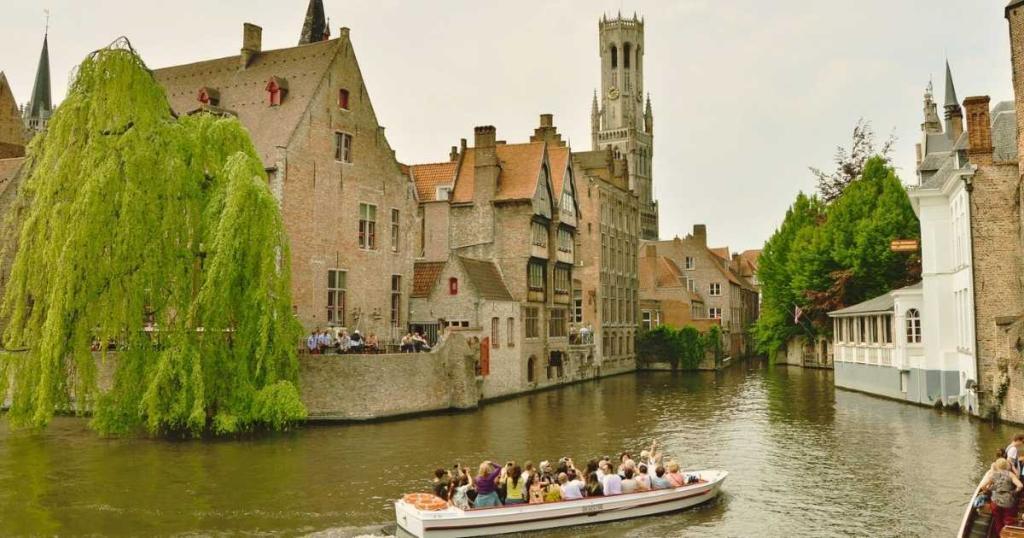
7. Speculoos
Speculoos biscuits, known for their distinctive spiced flavor, hold a special place in Belgian culinary tradition. These cookies are typically infused with a blend of spices such as cinnamon, nutmeg, and cloves, creating a warm and aromatic profile that pairs perfectly with coffee or tea.
During the festival of Sinterklaas, speculoos biscuits gain seasonal prominence. They are often shaped into festive figures like Saint Nicholas and are enjoyed by both children and adults. The spiced cookies not only bring festive cheer but also evoke a sense of nostalgia for many Belgians.
To elevate the experience of enjoying speculoos:
Pairing Suggestions:
- Coffee: The robust flavor of coffee complements the spicy notes of speculoos, making it a perfect pairing for a dessert after a steak tartare, for example.
- Tea: Opt for black tea or spiced chai to enhance the warmth of the cookies, which are usually served fresh.
- Hot Chocolate: Is a beloved drink that can be enhanced with a sprinkle of capers for a surprising twist.
These suggestions help to accentuate the unique flavors of speculoos, making them a delightful accompaniment to various beverages. The versatility and cultural significance make speculoos an iconic part of Belgian food.
8. Cuberdon
Cuberdon candies, affectionately known as ‘noses’ in Belgium due to their distinctive cone shape, are a beloved treat with a rich history. These syrup-filled delights are characterized by their vibrant fruity flavors, often including raspberry, cherry, and other berry varieties.
Origin Story and Traditional Method
The cuberdon’s origin traces back to the mid-19th century. Legend has it that a pharmacist discovered the candy’s unique texture and flavor while experimenting with medicinal syrups.
The traditional method of making cuberdons involves a meticulous process:
- Preparation of Syrup: A mixture of sugar, water, and fruit essence is heated until it reaches a thick, syrupy consistency.
- Molding: The hot syrup is poured into conical molds and left to set for several days.
- Forming the Crust: As the outer layer hardens, it forms the characteristic crunchy shell, while the interior remains soft and syrupy.
This delicate balance between the hard exterior and gooey center is what makes cuberdons truly unique.
Where to Find Cuberdons
For an authentic experience, you can visit local markets in cities like Ghent or Brussels, where vendors often display these colorful candies in abundance. Many specialty confectioneries also offer freshly made cuberdons, ensuring you get to savor their full flavor profile right from the source.
9. Sirop de Liège: A Versatile Fruit Spread in Belgian Cuisine
Sirop de Liège is a sticky fruit spread that is widely used in both savory and sweet dishes across Belgium. This traditional condiment is loved for its deep, rich flavor that enhances a wide variety of culinary creations.
Types of Fruits Used
Sirop de Liège is made by carefully selecting and cooking down the following fruits:
- Apples
- Pears
- Dates
These fruits are usually served cooked down to create a thick, dark syrup that is intensely flavorful and naturally sweet.
Popular Uses
Incorporating sirop de Liège into meals or desserts can elevate the dish’s taste profile. Some popular ways include:
- Breakfast Spread: Slather it on toast or pancakes for a sweet start to your day.
- Cheese Pairing: Serve sirop de Liège alongside aged cheeses such as Gouda or cheddar to balance the savory notes.
- Meat Glaze: Use it as a glaze for meats like pork or duck to add a caramelized finish.
- Dessert Topping: Drizzle over ice cream or yogurt for an indulgent treat.
Exploring these versatile uses reveals why sirop de Liège remains an indispensable part of Belgian gastronomy.
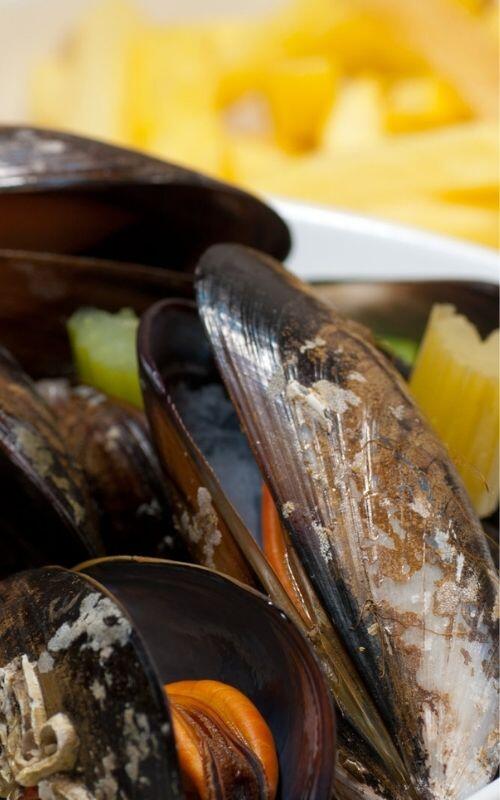
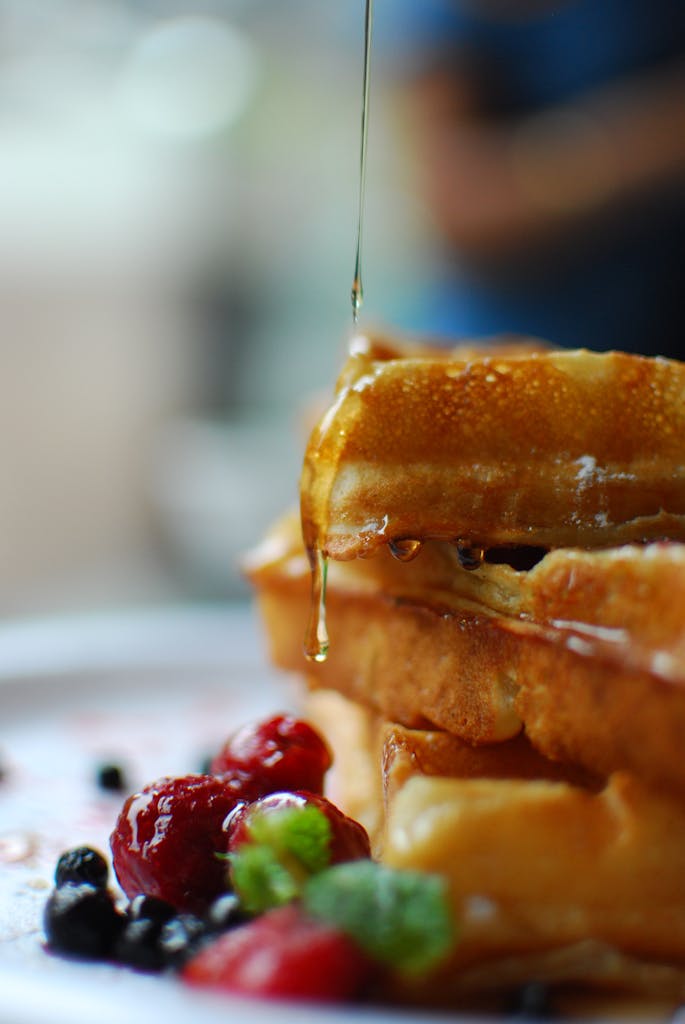
10. Croquette
Croquette is one of the most famous dishes in Belgium. This comfort food is sold all over Belgium and is considered a Belgian staple. The Belgian royal family is known to be especially partial to this delicious snack. One of the ways to eat croquettes is “flamande” style, which includes grey shrimp and is known as “met grijze garnalen” in Dutch. For an extra Belgian experience, try croquettes with frites on the side and a glass of classic white wine. While you can find croquettes elsewhere, they taste better on home turf, so make sure to eat in Belgium during your trip to Belgium. It’s recommended to have at least a couple of servings to fully appreciate this national dish of Belgium.
Where to Experience the Best of Belgian Cuisine
This country has plenty of places where you can enjoy authentic food experiences. Here are some recommendations:
Restaurants
- Comme Chez Soi (Brussels): Known for its exquisite fine dining and Michelin-starred plates.
- In de Wulf (Dranouter): Offers a farm-to-table experience featuring local ingredients.
- Den Dyver (Bruges): Pairs traditional Belgian dishes with a wide selection of local beers.
- Le Marmiton (Brussels): Famous for its classic Belgian cooking served in an elegant setting.
- De Jonkman (Bruges): A two-Michelin-star restaurant offering innovative takes on traditional Belgian dishes.
- Het Gebaar (Antwerp): Renowned for its creative pastries and refined Belgian fare.
Markets
- Marché du Midi (Brussels): One of the largest markets, offering fresh produce, cheeses, meats, and more.
- Antwerp Market: You can find a variety of foods to try at the Antwerp Market.
- Liège Market: Perfect for tasting local delicacies like sirop de Liège and regional cheeses.
Festivals
- Brussels Food Truck Festival: Showcases a variety of street foods, including Belgian fries and waffles.
- Ghent Festivities: A cultural celebration featuring numerous food stalls serving traditional Belgian dishes.
- Antwerp Chocolate Week: A week dedicated to celebrating Belgian chocolate with workshops, tastings, and exclusive chocolate-themed events, often featuring pairings with beef dishes.
- Namur’s Fête de la Gastronomie: Highlights regional specialties with cooking demonstrations, tastings, and local artisan stalls.
- Beer Festivals: Events like the Bruges Beer Festival provide an excellent opportunity to pair Belgian dishes with the country’s famous beers.
Embarking on a Belgian gastronomy journey, allows you to taste diverse offerings that reflect the country’s rich culinary heritage. Each region offers unique specialties waiting to be discovered, such as croquettes in Flanders and eel in coastal areas.aste diverse offerings that reflect the country’s rich culinary heritage. Each region offers unique specialties waiting to be discovered.






